IIMA ALUMNI GIVE BACK
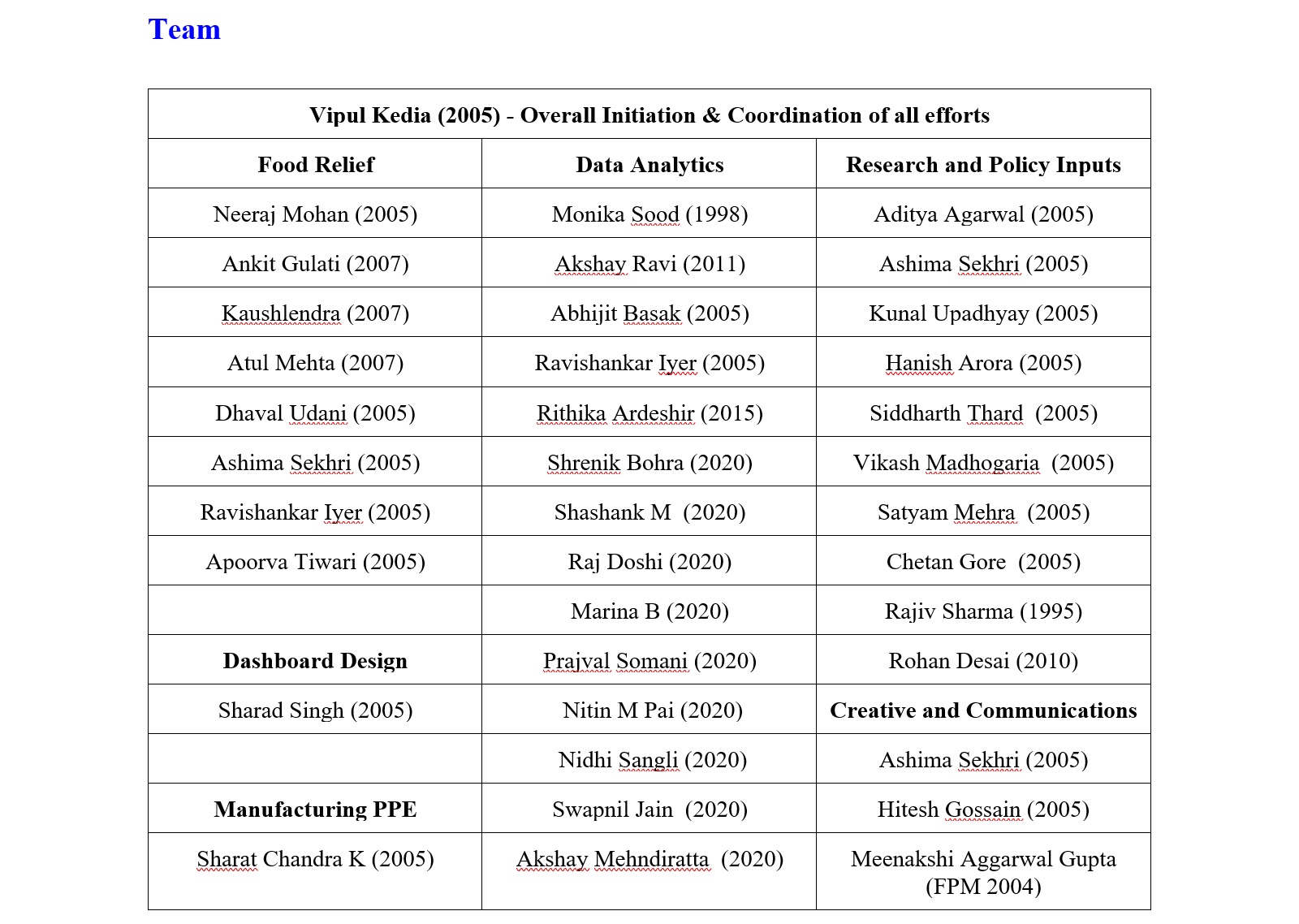
Led by the 2005 batch, IIMA Alumni from Batches 1992 to 2020 come together to lend support to Community & Government during the pandemic
The entire world faces today, an invisible enemy that has brought the most powerful nations to their knees. Nobody could have predicted or prepared in any way for a pandemic of this nature. For India, with our high population density, the low socio-economic status of a vast segment of the population coupled with poor healthcare infrastructure, the path ahead was hazy. As the situation evolved through February and March, it became clear that every individual, in their own capacity, has to fight this battle.
Media around us today is filled with more bad news than good. While no emphasis needs to be laid on the bad news, the good talks about stories of kindness, of hope, of people coming together to combat the hurdles that face them make a difference. Below is another such story.
What makes this story so special? It’s because simply sharing the same hallways, living in the same dorms and the fact that at one point of time, IIM Ahmedabad was home to us all, was enough to unite us. The fact that something that simple was powerful enough to make people of different walks of life come together to create impact, is what makes this story special. It is a story about the inherent goodness in all of us and the will to do something if we get the right opportunity.
As alumni of this prestigious institution, being fortunate enough to be where we are today, it was imperative that we find a way to create a difference. With this end-goal in mind, a group of people from the class of 2005 came together in mid-March to chart out a plan.
Two broad action areas were identified:
A) Provide food relief to people who would undoubtedly have lost their livelihood.
B) Reach out to the Government to see how we could channelize the intellectual capabilities of various people to help problem-solve.
An outreach was made to the Secretary IT, Govt of India, since one of us knew him, and we were involved on an informal level. However, the more days we spent working the more the expanse of the problem became apparent. To formalize and streamline the work a call for volunteers was posted. In a matter of one hour, 20-25 people from the class of 2005 were on board. “It was almost as if we were back in PGP1 term 1” they said as they described how they worked all night, until 5 am and restarted work at 7 am. The weekend that followed was almost like a assignment submission weekend! But working with your B-School batchmates in an environment like that has its own charm, especially when the cause is of this magnitude.
Various work streams were formed with people divided into groups. An outreach was also made to people from the IIMA Alumni community to involve them, as appropriate. Eager support was received from people across multiple batches.
We’ve attempted to give an insight into some of the work we have been doing, broadly in the areas of Data Analysis and Prediction, Creative Mass Communication, Policy Inputs and providing Food Relief to migrant labourers and daily wage earners.
FOOD RELIEF For the last 15 years, an initiative to collect funds and distribute blankets to the poor in North India has been run by members of our team from the classes of 2005 and 2007. We saw scope to increase the work being done by also providing food to migrant workers and daily wage earners.
We decided to provide a dry ration kit, consisting of basic necessities for a family for 8-10 days. Our supply chain fell in place when we forged a tie up with BigBasket, who set up a B2B account for us and ensured smooth delivery across all major cities in India, even during the lockdown.
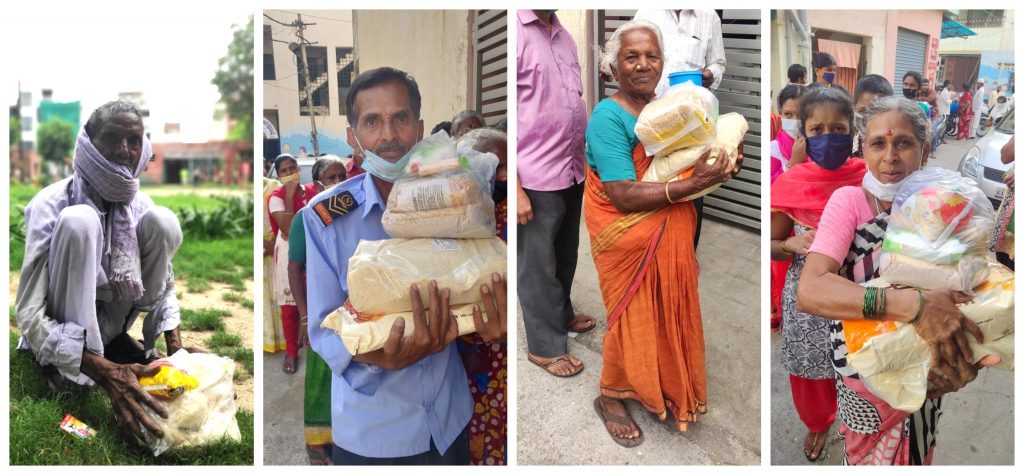
We needed to raise funds and a partner who could collect the funds and provide a tax exemption to donors. We knew Kaushlendra from the IIMA class of 2007, who runs his NGO – KAUSHALYA Foundation. He was immediately invested in the cause; and gave his whole-hearted support, purely on a voluntary basis. KAUSHALYA Foundation is the biggest reason we were able to take the initiative to the scale it operates at today. Partner organizations like Razorpay, BigBasket, Eko Financial Services and companies who gave us a CSR contribution further lent credibility to the cause.
Along with BigBasket giving us an account for KAUSHALYA Foundation, they supported our teams in 11 cities thus seamlessly coordinating over 50 deliveries per week. Razorpay waived off all payment gateway charges on any funds that we collected for this initiative.
Eko Financial services is a microfinance company that operates in the space of helping migrant labourers transfer money back home. They worked with us to identify people who require help and get them the aid. With data of over 10 million migrants who use their services, they identified those who used to regularly send money back home before the lockdown but were not doing so since March. They were contacted to check if they needed assistance. They were asked to visit the same retail outlet and were given ration kits. This retail network in multiple cities helped us aid thousands of families in a targeted manner.
Additionally, we came in touch with several individuals and small organizations across different cities that were working on the ground to get ration to the needy. We helped them scale up their efforts by providing ration to them and to a few community kitchens in different cities.
One of our core team members is part of the leadership team at Blackstone, and with his support we managed to raise more than 1.6 crore in CSR funds from Blackstone invested companies. Individual contributions totaled another 1 crore from about 300 individuals, majority from the IIMA community. This amount was used entirely in the food initiative with every penny going towards only purchase of rations.
From April 1st to June 15th, we have collected over 3 crores, of which 2.3 crores has been spent to provide over 500,000 Kgs of ration, which is equivalent to over 3 million meals. More than 31,000 families have been aided across 11 cities and areas of rural Bihar. This initiative moves forward with unwavering strength, with the hope to provide 5 Million meals to the poor. Details at https://www.facebook.com/smilesforallindia
FUNDING AND MANUFACTURING OF PPE Sharat Chandra from the 2005 batch, who founded Butterfly Fields, wanted to repurpose his manufacturing facility to manufacture face shields and aerosol boxes. He worked out the designs and technical feasibility of doing so with his team. The class of 2005 crowdfunded over 28 lacs to provide funding to enable this. Over one lac face shields and over one thousand aerosol boxes were manufactured through this fund and given to various hospitals and frontline workers in Hyderabad.

DATA ANALYSIS AND PREDICTIONS What started off as just a basic model made overnight to predict the movement of the pandemic, turned out as an independent consulting unit that regularly interfaced throughout the lockdown period with several state governments aiding in capacity planning.

In the early days, when the number of cases were still below 1000 a basic model was prepared which was validated by doctors and a few government officials. To make this model more robust, a few volunteers outside of the IIMA community were roped in. Extensive research was conducted on the evolution of the pandemic in countries which already had higher caseloads vis-a-vis India. This led to the model parameters and assumptions falling in place across the next few weeks, which were tested on data across different countries. The unique part about the model was that it could be modelled for any community – be it a city, district, state or country, thereby enabling visualisation of impact in both micro and macro contexts.
The model predicts the curve of the pandemic across time, the window where it would peak in a given state/city and all aspects of the healthcare infrastructure like – daily detected cases, deaths, total infections (detected + undetected), testing capacity needed, hospital beds needed, ICU beds needed, ventilators needed, doctors and nurses needed, PPE needed etc. This made the model extremely valuable for various state governments and district administrations, more so because very few models existed at that time with this capability.
The team has been able to provide valuable inputs to various State Governments and also guide them on deploying appropriate testing strategies and creating adequate hospital infrastructure. The team continues to engage and disseminate its understanding of the pandemic and its methodology to evaluate progress of the same in various cities and thus formulate appropriate actions at various levels of the pandemic. The team’s model also continues to be refined and accepted through widespread consultations with industry experts and scientists.
Extensive support for this workstream was received from Arete Advisors, a consulting firm in the Healthcare Delivery, Consumer and Social Impact sectors, in building the model and managing the overall coordination with states. This firm has Monika Sood (IIMA class of 1998) as its co-founder; we were supported full time by Akshay Ravi (IIMA class of 2011) and other members on Monika’s team on a pro-bono basis. The team has worked tirelessly with us for over 3 months now, and they’re moving forward with the same momentum. Their support has been invaluable in keeping us going!
April ended with us feeling a resource crunch, more people were needed to manage the extent of queries and keep the model updated. This gap was filled by the recently graduated batch of IIMA with an enthusiastic response when asked to pitch in. Almost 20 graduates applied, and about 10 were onboarded to join the team.
CREATION OF DAILY DASHBOARD It was realised by the team that most Covid dashboards available in India did not provide the right set of metrics to monitor the progression of cases across different cities and states. An automated dashboard was created using publicly available Covid data to provide appropriate metrics and visualizations by top cities and states to monitor the spread of infection and predict upcoming hotspots. Reports from this dashboard continue to be circulated daily to some of the senior most officials across states.
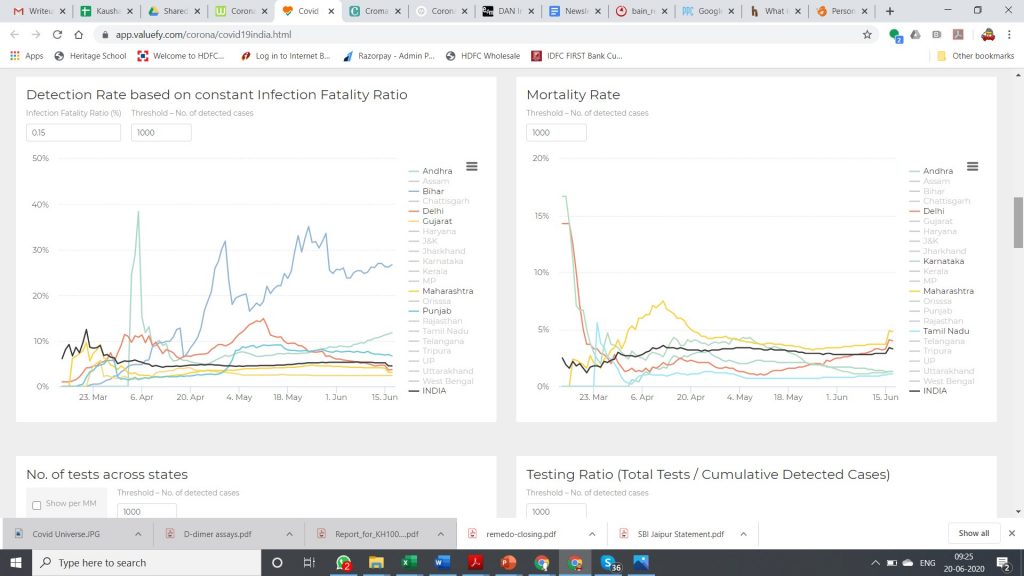
CREATIVE MASS COMMUNICATION It was fairly clear at this point that every resident of the country had a role to play in curbing the spread of the virus. Simple yet effective communication was what we needed to educate and encourage the masses to take necessary precautions. This feat could be best achieved by some seasoned professional who had the experience of driving mass communication. One name that came to mind was Shri Piyush Pandey who was the man behind some of the best campaigns, including the “Mile Sur Mera Tumhara” campaign. While we were all inexperienced in putting together a creative campaign, but with some amount of toil, we connected with the leadership team in Ogilvy India, who were kind enough to help with design as well as execution of the campaign.
Mr. Pandey and his team put together and executed three primary campaigns:
A) Mask Force campaign with national cricketers to encourage people to wear masks.
B) Setu mera bodyguard campaign with Mr. Ajay Devgn with the objective of driving people to download the Aarogya Setu app.
C) Campaign with Shri Amitabh Bacchan addressing the societal stigma attached with contracting Covid
Despite the execution of the campaign being during lockdown 1, the entire Indian cricket team (Sachin, Virat, Sourav, Bhajji, etc) and top stars like Mr Bachchan, Ajay Devgan etc. were looped in and our team played a pivotal role in the overall coordination and execution of the campaigns, along with designing a media dissemination plan.
While this tackled the need of the hour, further work was done to make an extensive communication plan for all stages of the pandemic. This detailed out what different kinds of communication were needed at different stages, the key messages and appropriate channels.
A team of graphic designers was put in place by everyone extensively reaching out to people, and several creatives, which were used by the government across social media and digital channels, were designed.
Working in the creative space certainly wasn’t our strong suit, which makes this effort unique, because at different stages some of us were always working out of our comfort zones and pushing ourselves to get the task done.
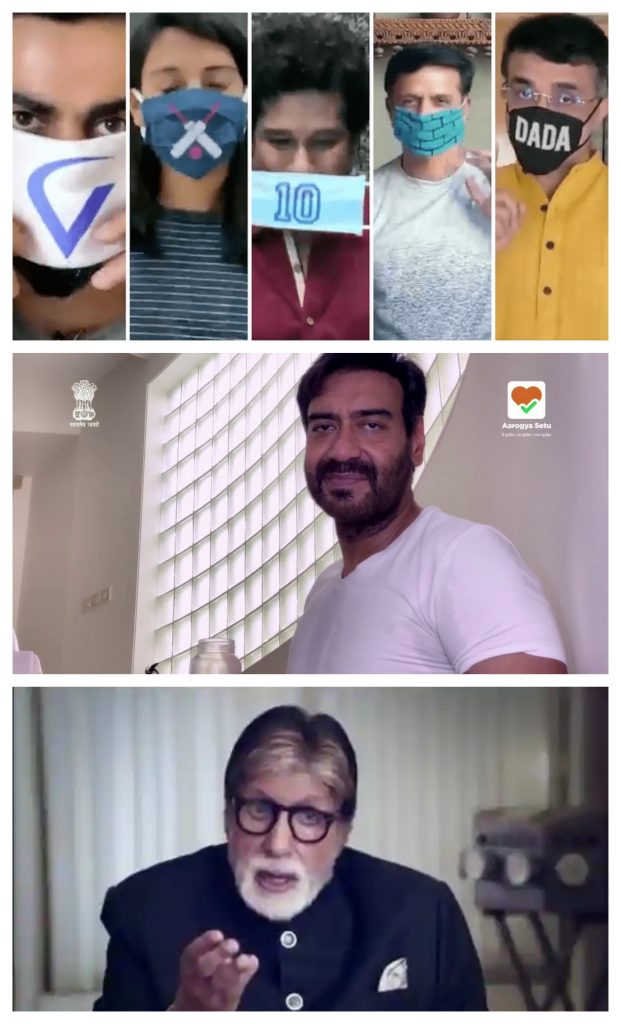
THE AAROGYA SETU APP We worked closely on enabling the creatives as well as the promotion of the Aarogya Setu App. The team worked nights on end to improve the User Interface and graphic design elements on the App, some of which continue to be part of the App. With respect to promotion, we had one of the top advertising agencies in the country on board to help with the creation and execution of the campaign. Detailed media plans and strategies were fleshed out for the promotion of the app to boost downloads of the App to make it cross the 10 crore mark.
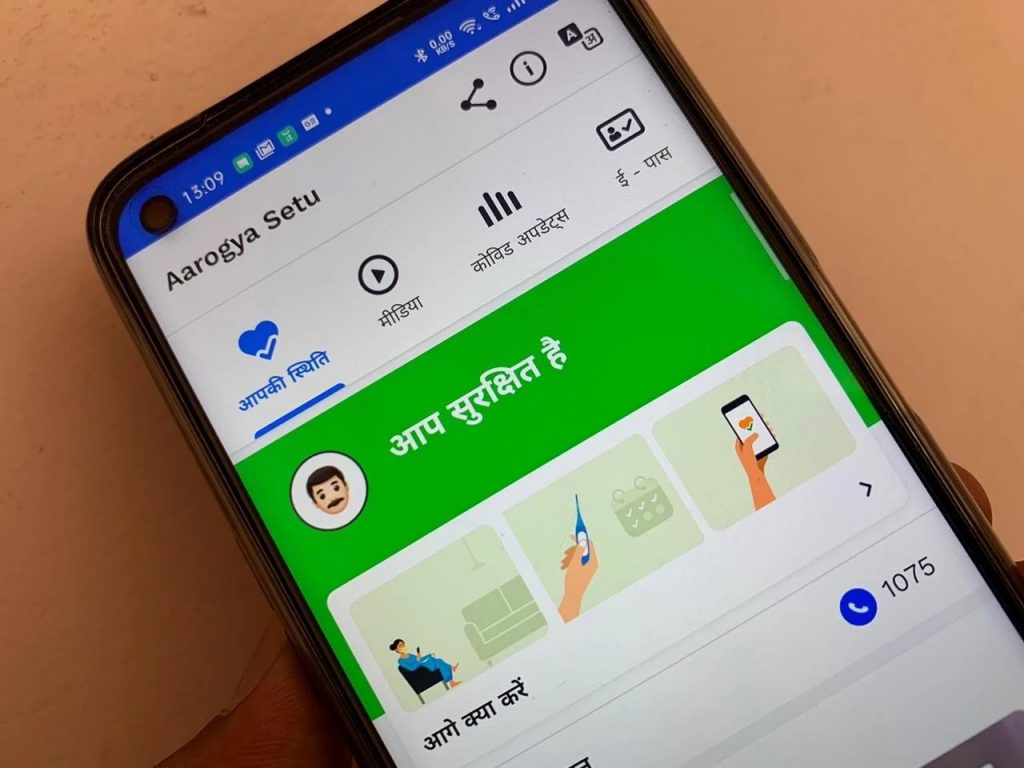
RESEARCH FOR TESTING AND GLOBAL BEST PRACTICES In the beginning of April, as we moved forward, we saw that the world was learning new things about COVID-19. Thus, there was a growing need for research on best practices on testing, availability of tests, organisations manufacturing testing kits, quantity needed, efficacy of the test across various stages of the virus, best practices for community testing and several other pressing questions.
A lot of literature research was done by the team and presented to the government to help create a deeper understanding and drive efforts accordingly
POLICY ADVICE The concerns of the government also extended to the state of the Indian economy. It was here that some of the best consulting minds of the 2005 batch stepped in to create comprehensive decks highlighting procedures for reopening of the economy, safety protocols in different sectors such as manufacturing, healthcare and travel to name a few. Phased reopening plans for different sectors, lockdown protocols for hospitals were also among the areas worked upon.
As COVID swept through the nation, it sent across shock waves of panic. In times like these, it’s a matter of pride to say that we could add value in several areas of importance and our inputs served as crucial deliberation points; that is a greatly satisfying feeling. Instead of being depressed and worried, we all found a common cause and found satisfaction in doing what we could rather than being armchair activists. However, the real happiness we found was in the power of OUR collective, the IIMA collective. People right from the batch of ‘92 all the way to the recently graduated batch of ‘20, all worked with incredible passion and vigour. While deadlines were tight and problems seemed larger than ever, there was no time to waste. Every person worked with people they probably had never interacted with before, exhibiting an incredible amount of trust and understanding between people. Each person stepped out of their comfort zone, people who hadn’t been involved in the C of creative were working with Ogilvy and having zoom calls with Aamir Khan. But everyone adapted themselves to keep the machine going, because everyone knew that harnessing the power of the collective is never easy, but when the going gets tough, everyone pitches in!
This new model of volunteering and leading projects during a time of crisis and seeing them to fruition is something that shows the power and capability of our Alumni Network. Many people from the government and volunteers from outside the IIMA community have been part of these efforts as well, who have not been named, but none of the above would have been possible without their efforts.
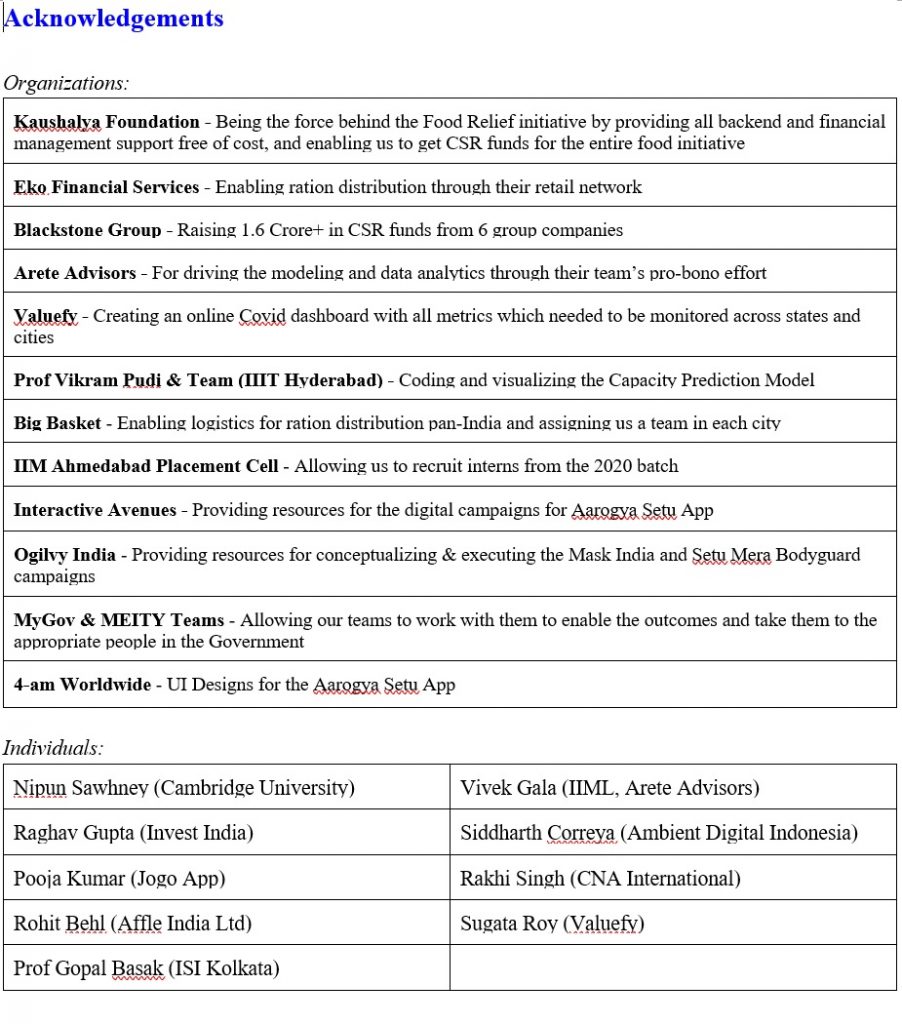
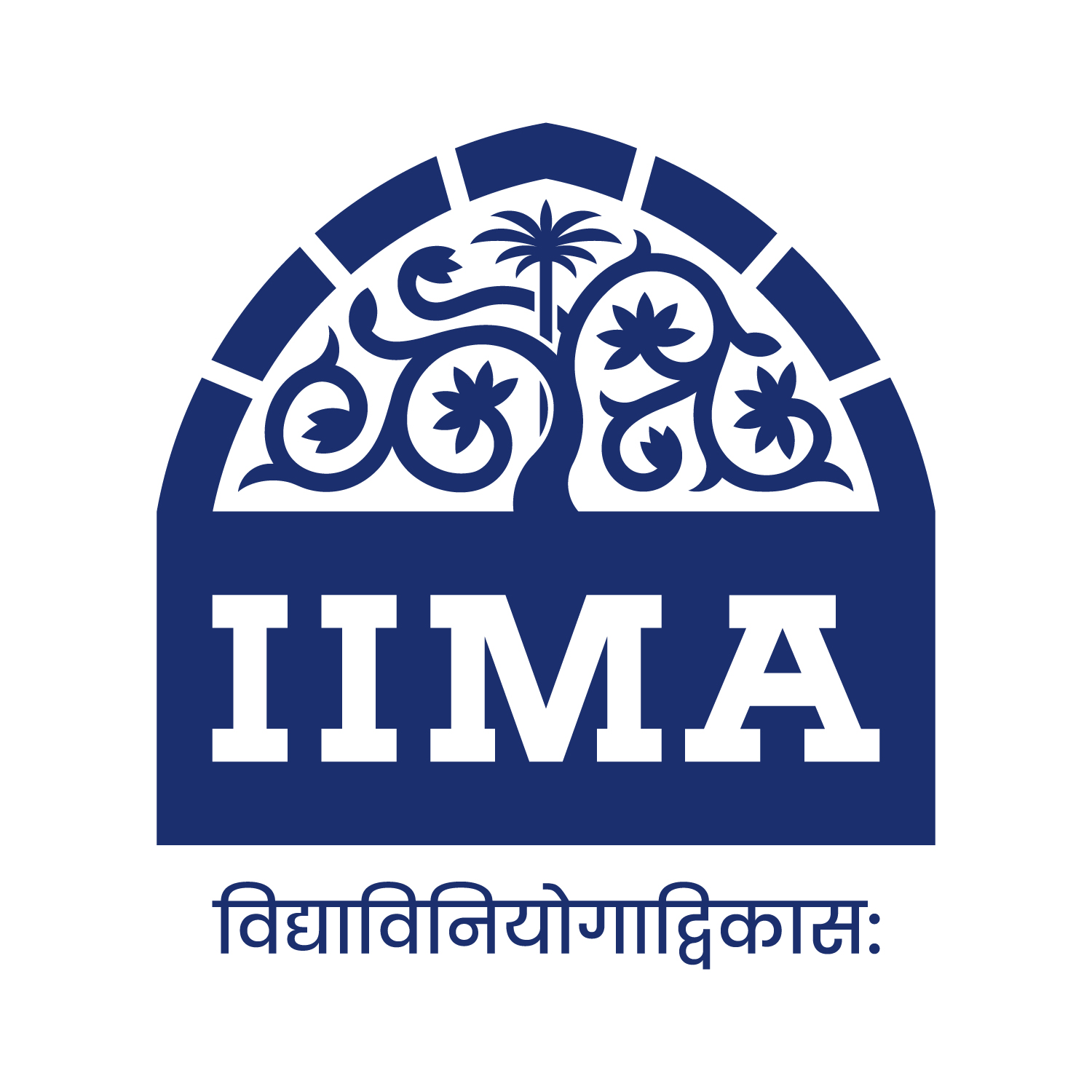


Sorry, the comment form is closed at this time.